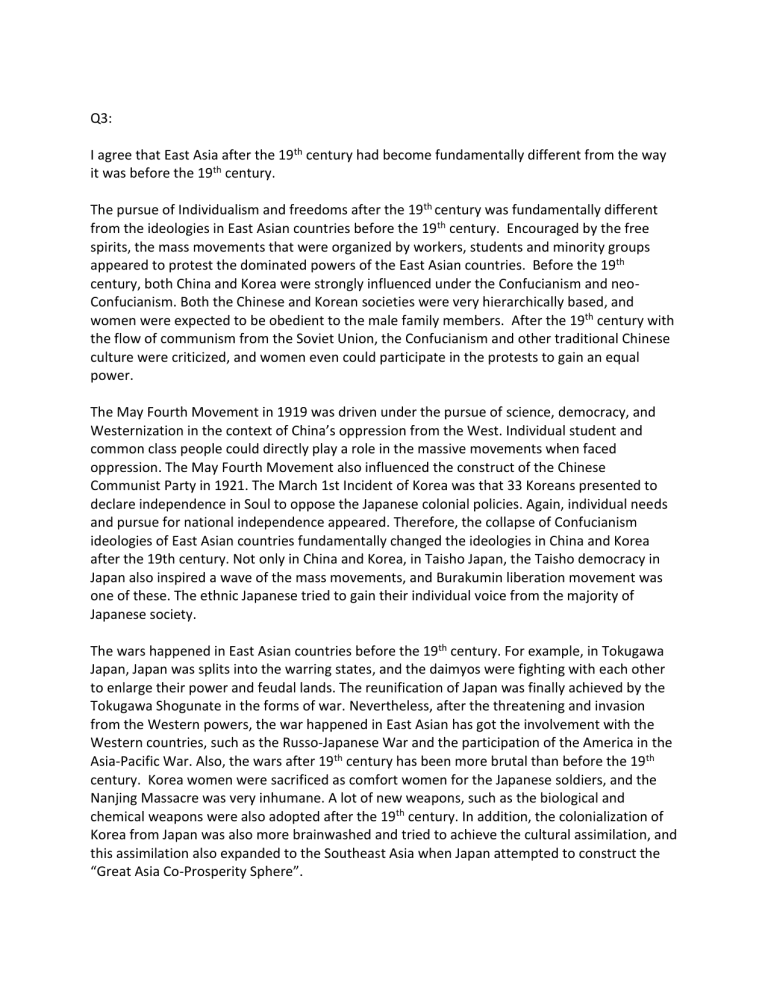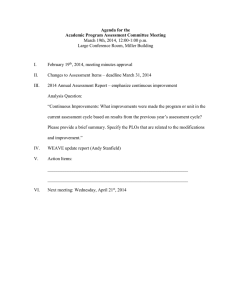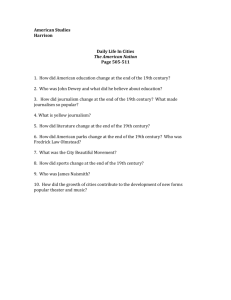
Q3: I agree that East Asia after the 19th century had become fundamentally different from the way it was before the 19th century. The pursue of Individualism and freedoms after the 19th century was fundamentally different from the ideologies in East Asian countries before the 19th century. Encouraged by the free spirits, the mass movements that were organized by workers, students and minority groups appeared to protest the dominated powers of the East Asian countries. Before the 19th century, both China and Korea were strongly influenced under the Confucianism and neoConfucianism. Both the Chinese and Korean societies were very hierarchically based, and women were expected to be obedient to the male family members. After the 19th century with the flow of communism from the Soviet Union, the Confucianism and other traditional Chinese culture were criticized, and women even could participate in the protests to gain an equal power. The May Fourth Movement in 1919 was driven under the pursue of science, democracy, and Westernization in the context of China’s oppression from the West. Individual student and common class people could directly play a role in the massive movements when faced oppression. The May Fourth Movement also influenced the construct of the Chinese Communist Party in 1921. The March 1st Incident of Korea was that 33 Koreans presented to declare independence in Soul to oppose the Japanese colonial policies. Again, individual needs and pursue for national independence appeared. Therefore, the collapse of Confucianism ideologies of East Asian countries fundamentally changed the ideologies in China and Korea after the 19th century. Not only in China and Korea, in Taisho Japan, the Taisho democracy in Japan also inspired a wave of the mass movements, and Burakumin liberation movement was one of these. The ethnic Japanese tried to gain their individual voice from the majority of Japanese society. The wars happened in East Asian countries before the 19th century. For example, in Tokugawa Japan, Japan was splits into the warring states, and the daimyos were fighting with each other to enlarge their power and feudal lands. The reunification of Japan was finally achieved by the Tokugawa Shogunate in the forms of war. Nevertheless, after the threatening and invasion from the Western powers, the war happened in East Asian has got the involvement with the Western countries, such as the Russo-Japanese War and the participation of the America in the Asia-Pacific War. Also, the wars after 19th century has been more brutal than before the 19th century. Korea women were sacrificed as comfort women for the Japanese soldiers, and the Nanjing Massacre was very inhumane. A lot of new weapons, such as the biological and chemical weapons were also adopted after the 19th century. In addition, the colonialization of Korea from Japan was also more brainwashed and tried to achieve the cultural assimilation, and this assimilation also expanded to the Southeast Asia when Japan attempted to construct the “Great Asia Co-Prosperity Sphere”. In a nutshell, I argue that after the modernization and being exposed to the West, East Asia has represented totally different compared with what happened before the 19 th century.

